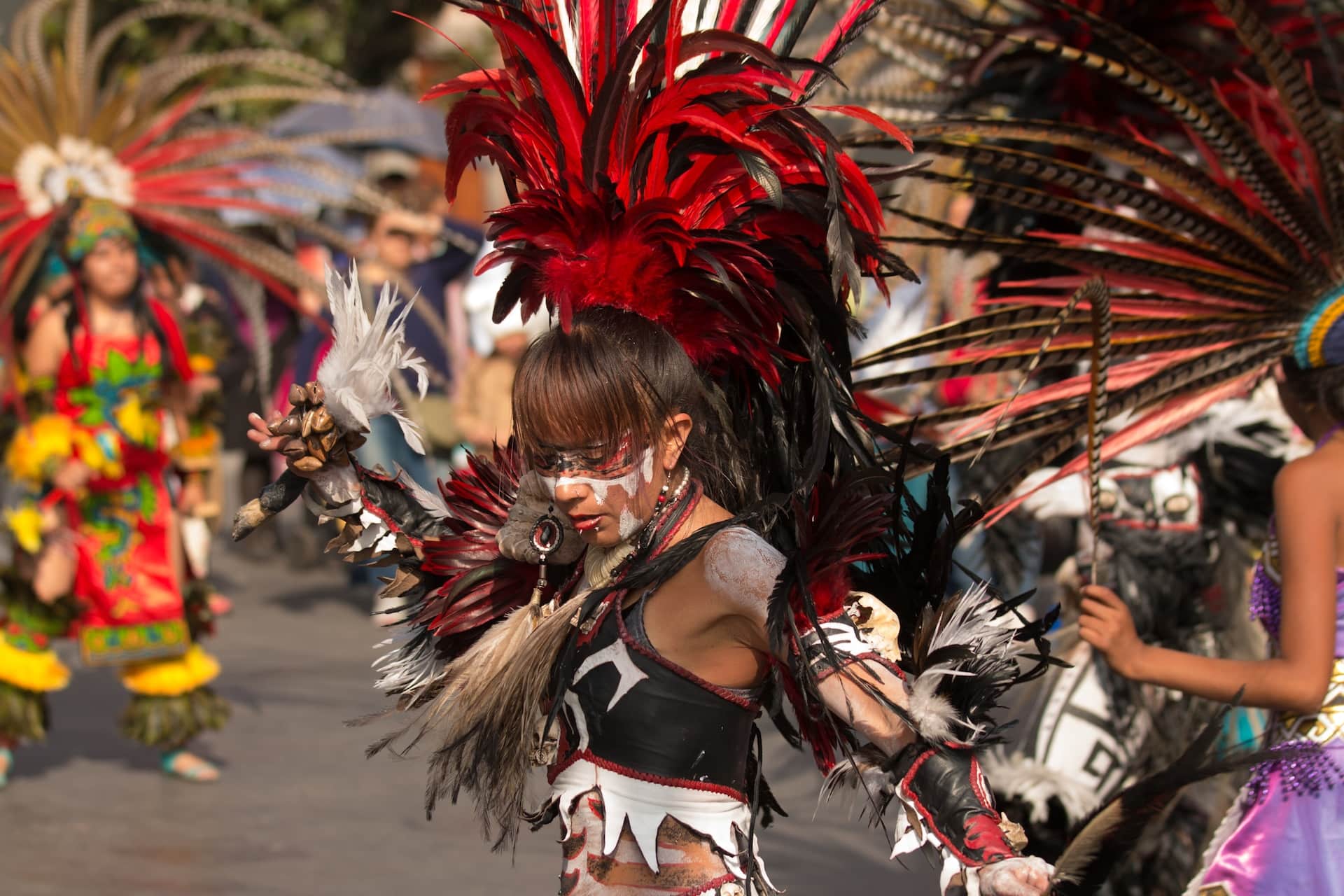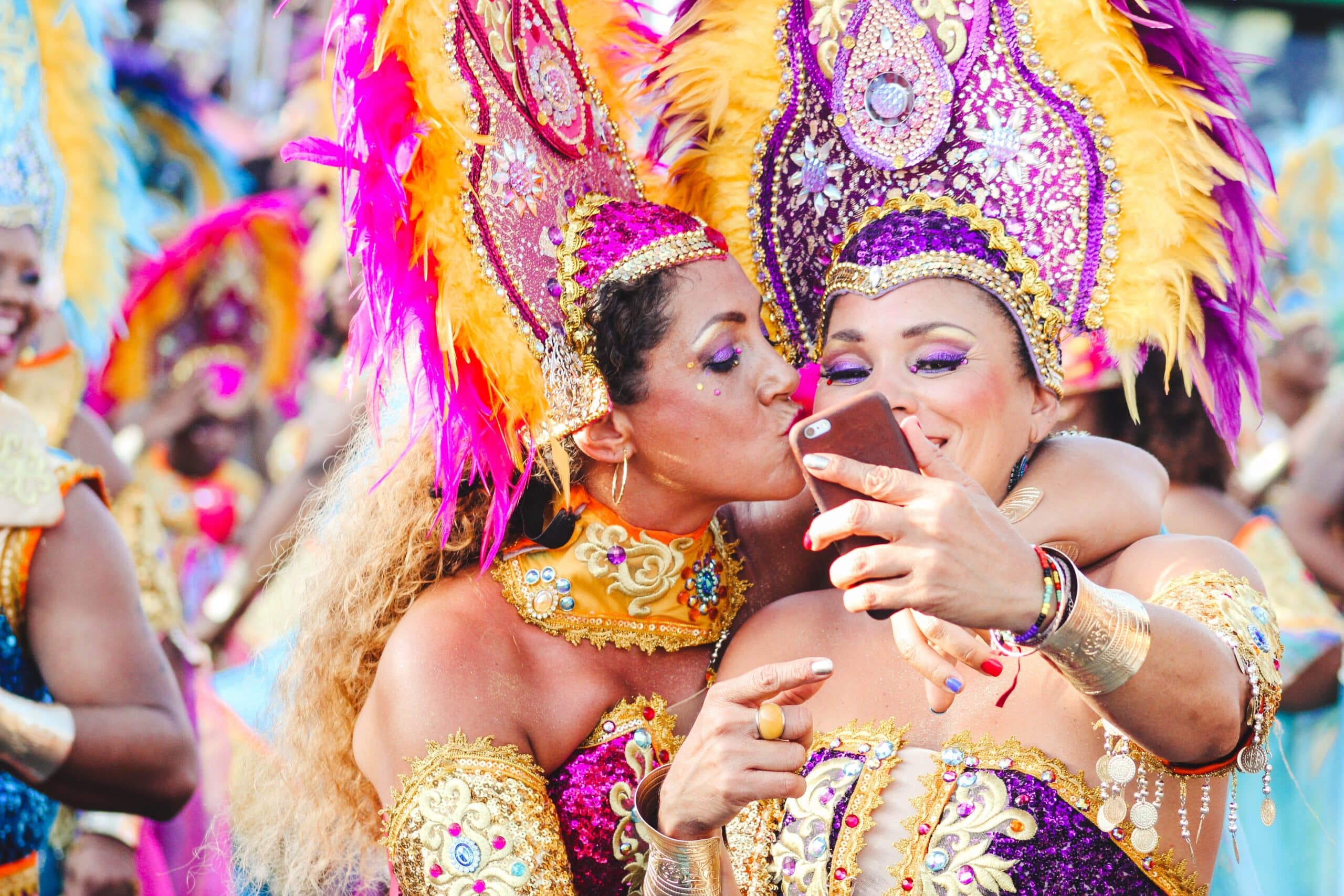You might have recently come across vibrant and extravagant pictures of the world’s largest festival on your TV or through social media. These glimpses are from the Brazil festival, an event known for its colorful parades, extravagant costumes, pulsating samba rhythms, and dazzling floats.
The Rio Carnival is an event that brings the whole country together and attracts millions of tourists from across the world. This is a once-in-a-lifetime type of festival that captures the heart and soul of Brazil’s way of life.
The first time I heard the pounding drums of Brazil’s Carnival, I was hooked. It wasn’t just a party—it was history unfolding before my eyes. From its wild roots in Portuguese traditions to the dazzling samba parades of today, Brazil’s Carnival is a story of rebellion, joy, and culture clashing in the most colorful way. Want to know how this epic celebration became the heartbeat of a nation? Let’s dive into the secrets that shaped it!
But how did these legendary festivities begin? Let’s brush up on some facts and details on the Brazil Carnival history.
How Did the Rio Carnival Start?
The word carnival comes from “carne vale,” which means “goodbye to meat”. The term was used to indicate 40 days of fasting practice in Catholicism known as “Lent.” The practice of carnivals began centuries ago in South America, Italy, Spain, and France. The festivals were adopted by the Roman Catholic Church in Europe as the Carnival festival.
When these festivals started in European countries, they spread to the Americas and then reached Portugal and Brazil.
The Rio Carnival festivities date back to the 1600s, when the Portuguese arrived and brought a few European traditions with them. At that time, carnival included celebrations and festivities before the Christians spent their days fasting.
The earliest forms of this festival involved people coming out to the streets and throwing water, eggs, and flour. People at that time used to soak each other with water and mud, which often ended in street fights.
The festivals in the 17th century included masquerade dances and small balls, just like they happened in Europe. In 1723, the Portuguese settlers celebrated a festival named ‘Entrudo’.
The concept of the festival evolved and became more organized during the 1800s. During this time, the emperors used to join the parades, and people would wear luxurious, elaborate costumes and masks and pay homage to their culture.
During the 1840s, the festivals evolved into carnival balls, where polkas and waltzes became popular. In contrast, the modern-day celebrations of the Rio Carnival include a fusion of Portuguese, African, and Indigenous traditions.
The African Touch
The practice of festivals in Brazil originated in Europe, but still, there is an African touch to the festivities that we see today in the Rio Carnival. According to the history of the carnival, the African influence came to Brazil when it was one of Portugal’s colonies.
At that time in Africa, the slaves used to parade in the streets to ward off evil spirits as part of the famous carnival practice. These festivities evolved, and people started using tribal masks and costumes. Most African costumes also used feathers, which are seen in today’s Brazil festival. The feathered costumes indicate the rise and rebirth of the spirits.
The African slaves didn’t forget their culture and they carried out their cultural and religious practices in Brazil too. These practices include bowing and paying homage to Gods while wearing costumes and masks. The Africans also used leaves, grass, bones, and wood to fight against evil spirits.
The Advent of Samba in Brazil
Samba is an Afro-Brazilian dance that is performed during the Rio Carnival. It is energetic and lively and is not only popular in Brazil but in many other parts of the world.
According to historians, the African slaves that were brought to Brazil in the 1900s had a love for music and dance. As time passed, the slaves that came to Brazil from West Africa and Angola started to mix with the locals. Since then, the Samba parade has become a part of Brazilian culture and carnival.
Once slavery was eliminated in Brazil, a huge number of these Africans settled in areas including Praça Onze and Cidade Nova. After a few decades, these places became the main spot for the origination of Samba culture.
Today, artists, dancers, and musicians have added their varieties to the Samba parade. The popularity of the Samba dance is evident in Brazil, and it is considered a celebration in joyful times.

The Beginning of Samba Schools
Samba started to become very popular among Brazilians during the 1920s. People in Brazil shared their love for Samba, and they used to meet and learn from each other. Because of their passion for Samba, various clubs and schools started to form. The Samba schools today allow the people there to practice and exhibit dance.
The history of the carnival indicates that the first samba school was established in 1928. Deixa Falar, the first Samba school, led to the formation of various other Samba clubs, associations, and schools.
Later, the Association of Schools of Samba City was created to help promote Brazilian culture and carry out the Rio Carnival parade. The first public exhibition by a Samba school was conducted in 1932, and it was a big success. In short, Rio de Janeiro is the birthplace of the Samba schools.
Today, the Samba schools have their clubs, buildings, and gymnasiums that allow the carnival participants to practice throughout the year.
The Sambodromo
Sambodromo is the main exhibition during the Rio Carnival in Brazil. The word Sambodromo comes from ‘Samba’, the dance, and ‘dromo,” which is a Greek suffix meaning ‘running place’.
During this performance, the top 13 samba schools carry out the biggest carnival parade at the Brazilian carnival. In the early days, these parades didn’t happen in any specific location; instead, people carried them out in old streets. However, in 1984, the Governor of Rio proposed a proper venue for the Sambadrome. This is a 700-meter avenue that the people have properly developed. It also contains waiting areas and food courts.
When and Where Does the Rio Carnival Happen?
The Rio Carnival festivities happen in Rio de Janeiro, the most populous city in Brazil. The festivities begin the Friday before Ash Wednesday and continue for five days. Ash Wednesday marks the beginning of the Lenten period, which involves 40 days of fasting. The Carnival festival continues for five days.
Besides that, Carnival Monday is another event that Brazilians celebrate every year on Monday, just before Ash Wednesday. After that, they have Fat Tuesday and then Ash Wednesday.
The festivities begin a month before the Carnival weekend and can go on for a few weeks for those who want to continue the celebrations. All the main events, like the Samba Carnival Parade and Magic Ball, take place in Rio de Janeiro during those five days. The dates, however, might change according to the calendar.
Besides Rio de Janeiro, smaller but colorful and high-standard carnivals take place throughout the country, including in the coastal city of Salvador.
In 2025, the Brazilians celebrated the Rio Carnival from the 17th of February, Friday, to the 21st of February, Tuesday. The final parade in this festival involves Sambadrome’s annual parade, which they celebrate after the carnival ends.
What Happens During the Modern-Day Rio Carnival?

Every year, the Brazilian carnival takes place for a week, during which pulsing, flamboyant, and invigorating displays captivate the whole country.
The carnival indicates the beginning of the Catholic event, and it includes street parades, dances, vibrant costumes, and live music.
The festival kicks off with the crowning ceremony of King Momo, who is the king of the carnival. This ceremony signifies the beginning of the week-long festival.
Some of the most popular street bands in Brazil, including Banda de Ipanema, Blocos, and Cordao da Bola Preta, perform during the festival.
The main spot for the show-stopping festivities happens in the Sambadrome, which is located in downtown Rio de Janeiro.
The Sambadrome is a 700-meter stadium that can gather more than 70,000 people.
Every night, the best Samba schools perform in carnival parades, and the people judge them on the basis of their dancing skills, creativity, Samba music, and costumes.
These are all-night-long street parades and festivities that start at 9 pm and continue till 4 am.
How to Celebrate Brazil Carnival?
If you want to celebrate Brazil Carnival by taking part in the parade, you’ll have to book tickets six months in advance. On the other hand, if you just want to visit the Salvador Carnival or Rio de Janeiro, you can book tickets four to six months in advance. As the date of the Rio Carnival approaches, the ticket prices shoot up and the available space becomes limited.
To participate in the parade, you’ll have to get the costumes earlier and start practicing for the event. Besides Rio Carnival traditions, there are other festivals too that will help you learn more about Brazilian culture. Plus, ticket booking and accommodations for other small events are more flexible.
Many spectators also reach Brazil via cruise ships and boats to attend the festival. If you wish to witness the mesmerizing performances in the Sambadrome, you should stay in Copacabana Palace or Ipanema. These neighborhoods are good for visitors as they offer excellent accommodations and tourist-friendly restaurants.
If you’re a budget traveler, staying on Couchsurfing is better as it offers the cheapest accommodation. No matter where you plan to stay in Brazil during the carnival week, make sure to book months in advance.
Carnival History Wrap Up!
If you want to witness the lively and energetic Brazilian culture, the carnival offers the best time to visit the country. It attracts millions of spectators every year, so if you’re planning to visit, you must start planning way earlier.
The festival, which had simple beginnings, has now evolved into a mass-media global event. The preparations go on for the whole year, and the event lasts only a week.


